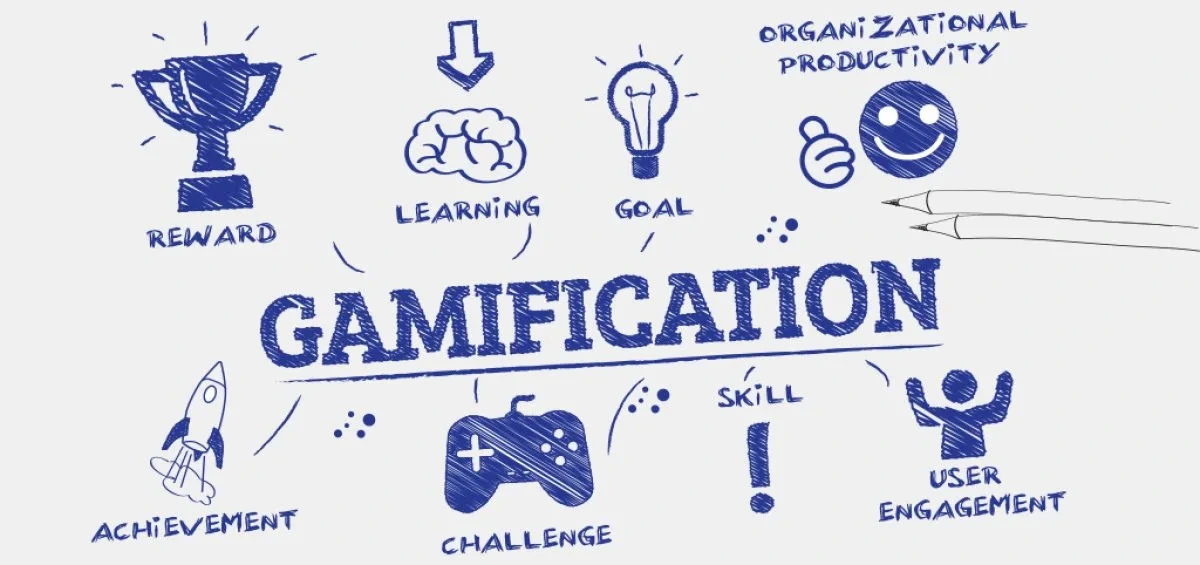
Everything You Must Know Before Selecting Gamification Services
Summarize with:
Boost ROI: Download Enterprise Learning Whitepaper!
Gamification and games are not the same things – while games are for fun and recreation, gamification refers to an instructional strategy with the aim to increase engagement, motivation, and participation. Gamification integrates game strategies such as point scoring, competition features, rules of play, etc., to an already existing website, enterprise application or an online community. An integral element of any learning or training program, gamification helps to simplify learning and make it more immersive and interactive through active participation and observation.
Table of Contents:
Going further, gamification is more than learning through competition and challenges – it is about bringing about behavioral changes more effectively and ensuring long-term engagement. For learners, to bring about behavioral changes, they need to practice their skills, and this is where the role of gamification assumes importance. Gamification principles include challenges and rewards, competitions, personalization and levels, which prompt people to get hooked and always come back for more.
According to a report by Mordor Intelligence the global gamification services market was valued at USD 5.5 billion in 2018. It is estimated to see a CAGR of 30.31% over the forecast period (2019-2024) on the back of an exponential rise in the number of smartphones and mobile devices.
Game-based learning when done right, can take training and learning to the next level, from gaining basic knowledge to the application of critical thinking and more accurate decision-making. For best outcomes, organizations must ensure that gamification in enterprise learning goes beyond the fun element and is relevant to the skills of employees that they wish to upgrade.
Also Read: 12 Ways to Enhance Employee Engagement with Gamification
Gamification in Enterprise Training
Gamification training can be of two types: Gamification in a course, implying that it is a one-time event; and gamification in a curriculum, which means that gamification elements are added into the full curriculum.
While gamification is the way forward in enterprise training, here are some things you need to know before using it to train your workforce and selecting gamification services:
1. Gamification is Not a Game
As stated above, gamification is not just a video game at work, rather, it is the use of game mechanics to induce certain behaviors. Humans possess the tendency to alter and influence behavior while playing games, receiving rewards, etc. Gamification harnesses this tendency to influence one’s own thinking and become effective problem-solvers in the real world.
2. Building Empathy
Good gamification practices are not just about good design; rather they focus on encouraging empathy between team players. The main purpose of game-based learning is not to engage learners through games that are over-competitive or manipulative but to encourage empathy and create an experience that helps them to gain a sense of mastery and retain autonomy at work while maintaining their well-being and healthy relationships with their team members.
While designing games for your enterprise training, it is important to ask what is in it for your employees. Good gamification implies that each employee is the hero of the game and is never belittled by over-emphasizing peer performance in fierce competitions.
3. Providing an Engaging Experience
Gamification makes learning more meaningful by breaking down concepts into bite-sized chunks or micro-nuggets. In a world of endless diversions and dwindling attention spans, publishers, trainers, and educators can make learning more engaging by designing content in small and very specific nuggets or micro bites.
A microlearning nugget is usually within a 3 to 5 minutes window since in this time window learners are more alert, more engaged, and therefore more likely to show interest and retain their learning. Games help to cut training into small sessions, allowing learners to respond positively. Besides, they can be personalized to offer to learn to employees in areas where they are not performing well.
4. Driving Intrinsic Motivation
Research shows that when it comes to performance, employees are more motivated by job satisfaction than high cash rewards. In other words, intrinsic motivation matters more than extrinsic motivation. As mentioned above, gamification is more about influencing human behavior. It is important to define the rules of the game to ensure that gamification activities meet organizational goals.
In 2012, Gartner had predicted that 80% of gamification projects would fail to reach business objectives primarily due to poor design. While implementing gamification in enterprise training, it is important to define and implement the rules to enjoy meaningful enterprise gamification.
5. Changing Organizational Culture
Gamification in enterprise training sets goals for the employees, and these goals can be tied to corporate goals. When employees see their performance in games they know it is objective and fair. So, gamification results in greater transparency, thus, changing the culture and the way performance is viewed and managed.
Instead of waiting till end of the year review, employees can see their performance in real-time, allowing them to course-correct, thus, benefiting themselves and the organization.
6. Gaming Versus Traditional Learning
Game-based learning is unique in the sense that it involves a higher level of customization, and participants can learn at their own pace, with ample time for practice and feedback. Learning involves both individual learning and team learning, and an instructor is or can also be present to solve problems that students don’t comprehend.
7. Collaborating with The Team
Since gamification involves a real-world situation, the entire team can collaborate in the learning environment, brainstorm on the possible outcomes and share their ideas to overcome the sales problems.
8. Reducing Chances of Failure in The Real World
Game-based learning resembles the real marketplace, which means that the company benefits by allowing its employees to make and learn from their mistakes in the virtual world, rather than making them in actual situations and costing it dearly in terms of money and reputation. Employees trained extensively through gamification avoid traps and pick up crucial tips and are less likely to fail in the real world.
9. Higher Receptivity to Learning
Game-based learning is multi-sensory learning which greatly enhances a learner’s ability to grasp and retain concepts. Employees can learn new concepts faster, retain them in their memories and remember to use them effectively in real-time.
Conclusion
Convinced about the benefits of gamification for enterprise learning? Hurix Digital‘s business simulation solutions may just be the answer to your company’s gamification needs. Our gamification services and elearning solutions can be customized to your unique business to address strategic challenges and enable learners to tackle them in that business scenario. With our gamification services, you can define your specific parameters and meet your training and learning objectives.
Get in touch with us today to learn more!
Summarize with:

Senior Vice President – Business Development
at Hurix Digital, with over 25 years of experience in EdTech and workforce learning. He excels in business development, customer relationship management, and scaling digital learning solutions, driving global growth through innovative content, simulations, and AI‑driven training offerings
 A Space for Thoughtful
A Space for Thoughtful 



